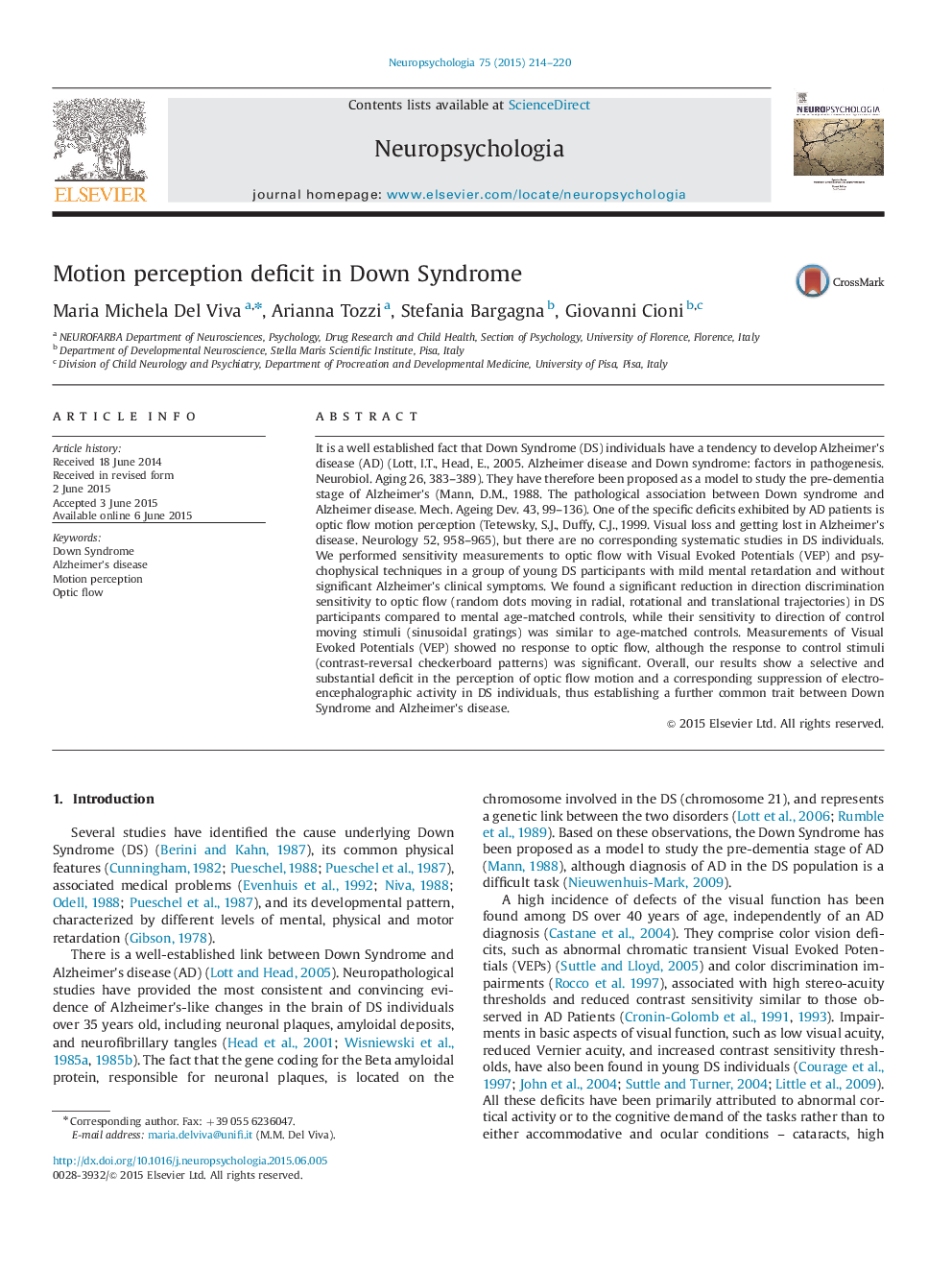ترجمه فارسی عنوان مقاله
نقصان ادراک حرکتی در سندرم داون
عنوان انگلیسی
Motion perception deficit in Down Syndrome
| کد مقاله | سال انتشار | تعداد صفحات مقاله انگلیسی |
|---|---|---|
| 77342 | 2015 | 7 صفحه PDF |
منبع

Publisher : Elsevier - Science Direct (الزویر - ساینس دایرکت)
Journal : Neuropsychologia, Volume 75, August 2015, Pages 214–220
ترجمه کلمات کلیدی
سندرم داون - بیماری آلزایمر؛ ادراک حرکت؛ جریان بینایی
کلمات کلیدی انگلیسی
Down Syndrome; Alzheimer's disease; Motion perception; Optic flow

